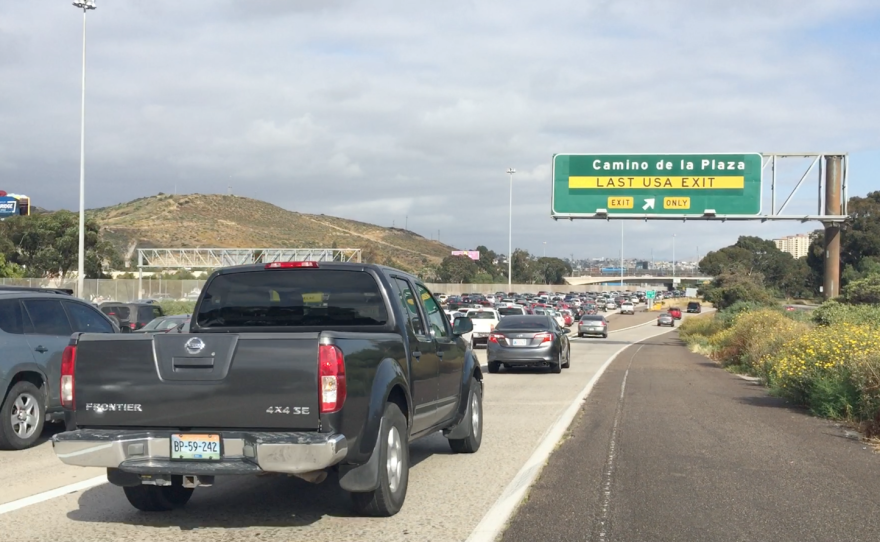Traffic jams into Mexico at the San Ysidro Port of Entry — the world’s busiest land crossing — are starting to resemble northbound congestion on certain afternoons.
U.S. Customs and Border Protection is conducting random inspections and lane closures that are causing some of the delays. The agency won’t comment on the frequency or timing of outbound inspections.
The agency's so-called "pulse and surge" operations on the southbound Interstate 5 are meant to stop fugitives, child abductions and illegal weapons smuggling into Mexico and must “maintain the element of surprise," according to the agency.
Keith Kleinstiver, a U.S. citizen who lives in Tijuana and works in San Diego as a school teacher, said traffic jams into Mexico are occurring almost daily starting at around 3 p.m., with customs officials standing on the highway just north of the Mexico.
On Tuesday, he waited 50 minutes to cross the border into Mexico at 3:40 p.m., Kleinstiver said. He added that he considers southbound inspections are a waste of U.S. resources and a waste of his time.

“It seems like double duty,” Kleinstiver said. “Why are we having (U.S. customs) inspect people going into Mexico when Mexico has its own people that do that?”
For years, tens of thousands of daily border crossers have had to contend with hours of wait times when crossing into the U.S., and have grown accustomed to them. But the lines into Mexico, which can now stretch for two or three miles, add another hour or so to their routine commutes and they are not happy about them.
On a Facebook group called "Como esta la linea Tijuana," or "How is the line Tijuana," more than 214,000 members regularly share information about border wait times into the U.S. from Tijuana. About 40 people in the group responded to a KPBS question about southbound wait times on Wednesday: "What do you think about the lines to enter Mexico recently?"

Most of them responded in Spanish. A few of the translations are below:
"The wait time has increased about 30 to 40 minutes since Trump arrived," wrote a user who goes by the Facebook name Fra Bel.
"It's deadly! Up to three hours!" wrote Rosalba Dominguez.
"I cross every day and each time it's more disastrous because of the CBP revisions and because the Chaparral port is under construction," wrote Carlos Mejia Rivera.
"Before, it was only on Fridays after 3 p.m. but now it's any day at various hours. The truth is, one starts to think twice about crossing into Mexico," wrote Marco Gonzalez.
The San Ysidro Chamber of Commerce is asking the U.S. and Mexican governments to launch joint inspections at the San Ysidro Port of Entry for southbound travelers in order to alleviate some of the traffic jams into Mexico, said the chamber's chief executive, Jason Wells.
"If both countries need to glean something out of southbound crossing, well then we need to house U.S. officers at El Chaparral and have a single point of inspection," he said.
Wells said the process could mirror a pilot program launched in 2016 at the Otay Mesa border crossing, where customs officers from the U.S. and Mexico work side by side to inspect commercial vehicles.






